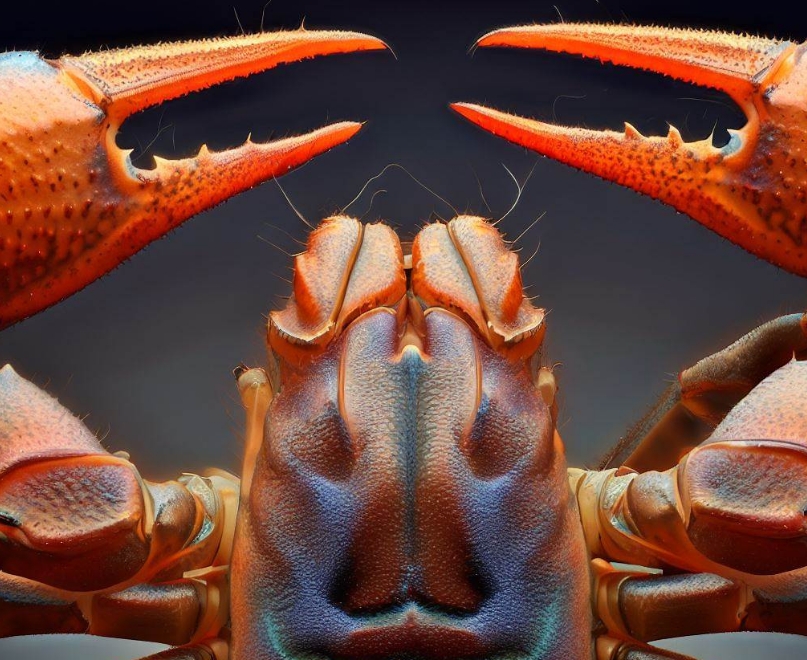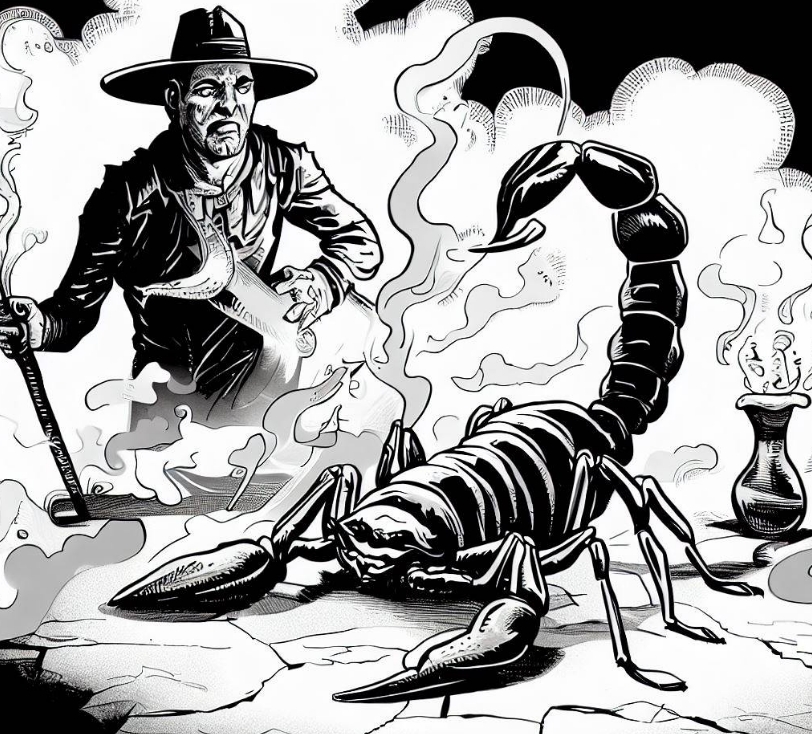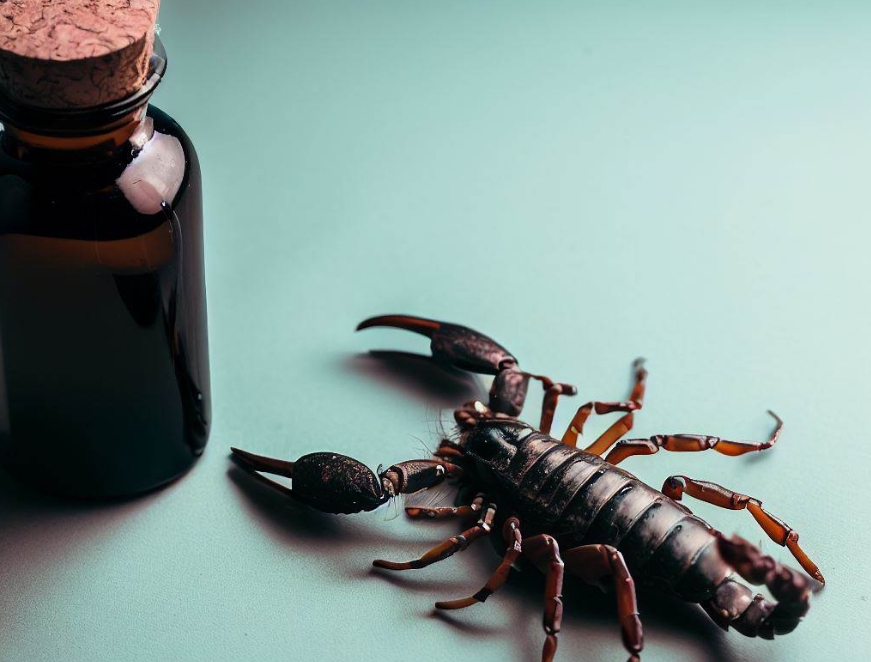At first glance, scorpions and lobsters seem like creatures from entirely different worlds. One crawls on land, striking fear into the hearts of many with its venomous sting, while the other swims in the ocean depths, coveted as a seafood delicacy. But appearances can be deceiving. In this article, we’ll explore the fascinating connection between scorpions and lobsters, diving deep into their shared evolutionary history and discussing what they have in common.
The Surprising Similarities Between Scorpions and Lobsters
Contents
To answer the question, “are scorpions related to lobsters?” we need to examine their biology and classification. On closer inspection, these two creatures share some remarkable similarities:
- Exoskeletons: Both scorpions and lobsters are invertebrates, meaning they lack a backbone. Instead, they have a hard, protective exoskeleton made from a material called chitin.
- Segmented bodies: Scorpions and lobsters both have segmented bodies, divided into a head (cephalothorax) and a long, flexible tail (abdomen).
- Jointed appendages: Scorpions and lobsters have jointed legs and specialized appendages, such as the scorpion’s pincers (pedipalps) and the lobster’s claws.
Arachnids and Crustaceans: Cousins Under the Sea?
Despite their similarities, scorpions and lobsters belong to different groups within the phylum Arthropoda. Scorpions are part of the class Arachnida, which also includes spiders, ticks, and mites, while lobsters are crustaceans, a group that also encompasses crabs, shrimp, and barnacles. These two classes, Arachnida and Crustacea, are closely related, sharing a common ancestor that lived over 500 million years ago.
Arthropods are an incredibly diverse group of animals, accounting for more than 80% of all known living animal species. They inhabit nearly every environment on Earth, from the depths of the ocean to the highest mountains. The common ancestor of arachnids and crustaceans is thought to have been a marine creature, meaning that scorpions and lobsters share a distant oceanic past.
Ultraviolet and Black Scorpions: A Surprising Connection to the Deep Sea
One of the most fascinating links between scorpions and lobsters can be found in their shared ability to fluoresce under ultraviolet (UV) light. According to an article from Best Pest World, when exposed to UV light, scorpions emit a bright blue-green glow due to a substance found in their exoskeleton. This phenomenon, known as fluorescence, is also observed in some deep-sea crustaceans, such as the bioluminescent shrimp Acanthephyra purpurea.
While the exact purpose of fluorescence in scorpions remains a mystery, some researchers believe it may help them detect UV light, which can aid in navigation and locating prey. In deep-sea crustaceans, fluorescence serves multiple purposes, from attracting mates to confusing predators. Although the precise function of fluorescence in these two groups may differ, their shared ability to produce such a striking visual effect highlights their evolutionary connection.
From Land to Sea: The Evolutionary Journey of Scorpions and Lobsters
As we’ve seen, scorpions and lobsters share a distant common ancestor, a marine arthropod that lived hundreds of millions of years ago. But how did these creatures evolve into the distinct forms we recognize today? To understand their evolutionary journey, we must trace the path from their ancient aquatic ancestor to their present-day terrestrial and marine habitats.
The Ancestral Arthropod: A Glimpse into the Past
The common ancestor of scorpions and lobsters is thought to have been a marine arthropod with features that laid the foundation for the diversity we see today. Although the fossil record is limited, scientists have been able to piece together a picture of this ancient creature based on shared characteristics between arachnids and crustaceans. This ancestor likely had a segmented body, jointed appendages, and a hard exoskeleton, much like its modern-day descendants.
The Emergence of Scorpions: From Sea to Land
Over time, arthropods began to diversify, giving rise to the various classes we see today. Scorpions are among the oldest known terrestrial arthropods, with fossil evidence dating back more than 430 million years. It is believed that early scorpions transitioned from an aquatic to a terrestrial lifestyle, gradually adapting to life on land.
Some of the adaptations that allowed scorpions to make this transition include the development of book lungs, which enable them to breathe air, and the evolution of specialized sensory organs, such as the pectines, which help them navigate their environment and locate prey. As scorpions adapted to life on land, they also evolved their signature venomous sting, which allowed them to subdue and consume a wide variety of prey.
The Evolution of Lobsters: Masters of the Deep
While scorpions were making their way onto land, other arthropods remained in the ocean, eventually giving rise to the diverse group of crustaceans we know today. Lobsters evolved in the marine environment, adapting to a wide range of habitats, from shallow coastal waters to the dark depths of the ocean.
Lobsters developed a number of unique adaptations that allowed them to thrive in their aquatic environment, such as gills for breathing underwater, specialized mouthparts for feeding, and powerful claws for capturing and manipulating prey. As lobsters diversified, they also evolved into a variety of forms, from the familiar clawed lobster (Homarus) to the more unusual spiny and slipper lobsters.
Conclusion: A Tale of Two Arthropods
So, are scorpions related to lobsters? The answer is yes, but their relationship is a distant one. Scorpions and lobsters share a common ancestor, an ancient marine arthropod that gave rise to the diverse groups of arachnids and crustaceans we see today. Over the course of hundreds of millions of years, these creatures evolved unique adaptations that allowed them to conquer a wide range of environments, from the depths of the ocean to the arid deserts of the Earth.
FAQs Are Scorpions Related to Lobsters
Q1: Are scorpions and lobsters related?
A: Yes, scorpions and lobsters are related, but they share a distant relationship. Both creatures are part of the phylum Arthropoda, with scorpions belonging to the class Arachnida and lobsters belonging to the class Crustacea. They share a common ancestor that lived over 500 million years ago.
Q2: What do scorpions and lobsters have in common?
A: Scorpions and lobsters share several key features, including:
- Exoskeletons made from chitin
- Segmented bodies divided into a head (cephalothorax) and a long, flexible tail (abdomen)
- Jointed appendages, such as the scorpion’s pincers (pedipalps) and the lobster’s claws
Q3: Why do scorpions and lobsters fluoresce under ultraviolet (UV) light?
A: Scorpions and some deep-sea crustaceans, including certain species of shrimp, are known to fluoresce under UV light. While the exact purpose of fluorescence in scorpions remains unclear, it may help them detect UV light, aiding in navigation and locating prey. In deep-sea crustaceans, fluorescence serves various purposes, such as attracting mates and confusing predators.
Q4: Did scorpions and lobsters evolve from the same ancestor?
A: Yes, scorpions and lobsters evolved from a common ancestor, an ancient marine arthropod that lived more than 500 million years ago. This creature gave rise to the diverse groups of arachnids and crustaceans we see today.
Q5: Are there any other arthropods closely related to scorpions and lobsters?
A: Scorpions and lobsters are part of the diverse phylum Arthropoda, which also includes spiders, ticks, mites, crabs, shrimp, and barnacles. Arachnids and crustaceans share a close relationship with other arthropods, such as insects and myriapods (centipedes and millipedes), all of which share a common arthropod ancestor.
Q6: What are the main differences between scorpions and lobsters?
A: The primary differences between scorpions and lobsters are their habitats and the groups they belong to within the phylum Arthropoda. Scorpions are arachnids and primarily terrestrial, inhabiting various environments on land. Lobsters are crustaceans and exclusively marine, living in a wide range of ocean habitats. They also have different respiratory systems, with scorpions possessing book lungs for breathing air and lobsters having gills for breathing underwater.





